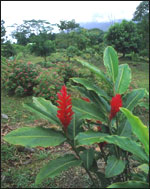The idea of slapping a dollar value on to an alpine meadow or the dappled green shade of a forest strikes a chill into the very bones of most environmentalists. Like love, nature is the kind of thing that money just can’t buy. Or is it? A small but growing chorus of ecological economists are saying that perhaps the best way to protect nature is to figure out just how much it’s worth — in cold, hard cash. In their quest to integrate Adam Smith with Rachel Carson, these proponents of “ecosystem valuation” are infuriating many of their colleagues: both economic evangelists preaching the gospel of the free market, and environmentalists who are horrified at the prospect of reducing the natural world to a cost-benefit analysis.
At the epicenter of this maelstrom is Robert Costanza, director and founder of the Gund Institute for Ecological Economics at the University of Vermont, and cofounder of the International Society for Ecological Economics. In 1997, Costanza and his colleagues made news headlines around the world with a paper, published in the British journal Nature, that estimated the annual net worth of the biosphere: $33 trillion, a figure greater than the annual gross national products (GNP) of all the world’s economies combined.
Over a mug of tea in his office at the Gund Institute, Costanza tells me that despite the big splash the figure made, $33 trillion is probably on the conservative side: “We always felt that was an underestimate, even from the beginning.” Last August, he and his coauthors came out with an even more startling number: In a paper published in Science, they proclaimed that investing in the preservation of intact ecosystems yields returns of 100 to 1.

Robert Costanza and his sustainable
office furniture.
Putting a price tag on the ecosystems of the world is a big job. But Costanza has smaller things on his mind as well — office furniture, for instance. Last summer, the Gund Institute moved to Vermont from its former home at the Center for Environmental Science, a research campus of the University of Maryland. When faced with the need to equip the institute’s new digs, Costanza opted not to reach for the nearest office-supply catalogue. Instead, he forged a partnership with local sustainable-timber producers and furniture-makers to make custom office furniture for the institute.
Costanza doesn’t say how much more the institute paid for the handcrafted, solid hardwood desks and shelves than they would have spent at Staples. But, he remarks, “it was probably cheaper, from a full-cost point of view.” In other words, although it may have cost the institute more, the custom-made furniture was the better bargain because it took into account the costs known in economic parlance as “negative externalities”: costs that society hasn’t yet learned to calculate.
Global Accounting, Enron-Style
Returns of $100 for every $1 invested. Even in the heady pre-Sept. 11 days of the dot-com craze, numbers like this would have made any day trader giddy. So why aren’t investors lining up by the thousands to buy old-growth tropical rainforests and mangrove swamps?
The answer is simply a matter of how the costs and benefits are distributed. When costs and benefits flow to the same place, Adam Smith’s “invisible hand” works like a charm to maximize general economic well-being. When they part ways, you get externalities. The owner of an old-growth forest makes more money cutting trees down than letting them stand, because she is able to pass on the massive external cost of their loss to 6 billion other people.

Everything has its price.
Costanza and his colleagues believe that putting a price on the services ecosystems provide (such as stabilizing the climate, providing biodiversity, and pollinating crops) alerts us to the true costs of the destruction of the biosphere. If these costs were accounted for in standard measures of economic well-being, like GNP, policymakers would be less inclined to allow corporations to exploit natural resources with impunity.
“Enron’s been doing a bad job of accounting, but we’ve been doing an even worse job on a larger scale,” he says. “The depletion of the natural capital base has often been counted as profits, because these external costs are miscounted as profits. Are we making bad management decisions because we’re not considering all of our capital base? If you were the CEO of Earth, you would have been fired long ago, and replaced with someone who can take that stuff into account.”
(Costanza & Co. are currently working on a glossy, book-length “shareholders’ report” for the Earth, slated for publication early this summer. Its effects on upper-level planetary management remain to be seen.)
There are economic alternatives to treating ecosystem destruction as profit. As early as the 1920s, British economist Nicolas Pigou advocated for taxes on activities that caused pollution and sickness, in much the same way that state governments tax tobacco to discourage smoking. Costanza would like to see governments adopt more of such taxes, along with eliminating what he calls “perverse subsidies” from which society derives no benefit. “Tax bads, not goods,” he says. “You could reduce taxes on labor and income, things you want to support, and increase taxes on things you want to discourage.”
Ma Nature and Primordial Blasphemy
Costanza’s work has drawn plenty of fire from critics on several fronts. University of Maryland scholar Mark Sagoff objects to Costanza’s calculations, saying that because nature has a stranglehold on the ecosystem-services market, the numbers are meaningless. “If nature sought to operate as a monopoly, the government would rightfully either set the price of an ecosystem service at a small percentage above costs (as it does with utilities) or break up Ma Nature into competing units (as it did Ma Bell),” he writes.

Others are morally outraged at the very idea of pricing ecosystems. “Exchanging, selling, calculating tradeoffs, or otherwise commoditizing biodiversity in the global sanctuary of creation simply to maximize immediate human gain represents the primordial blasphemy of confusing sacred space with the market place,” fumes Timothy Weiskel, an environmental ethicist at Harvard Divinity School, in an essay comparing the Costanza team to the money-changers Jesus threw out of the temple.
The trouble with such ringing indictments is that, true or not, they simply don’t convince enough people. Most people would think it a terrible shame to destroy a work of art, but only a handful of tweed-jacketed aesthetics professors would consider that a planet devoid of all human life would be any worse off without Michaelangelo’s David on it. Likewise, deep-ecology arguments for the inherent sanctity of untouched ecosystems may appeal to the fond hearts of a few preservationists, but such sentiments don’t hold much water with land managers.
Costanza sees his work as a way for hard-core environmentalists and hard-nosed policy makers to speak the same language, regardless of their moral commitments. “You can say how important you think water supply is as a service until you’re blue in the face, but until you say ‘It’s worth this much in dollars,’ it’s hard to get people to pay attention,” he notes. “Once you’ve got their attention, you can then go back and say, ‘Now, this is why it’s so valuable.'”
As for the kinds of tradeoffs Weiskel criticizes, Costanza says we make them all the time: “We are converting forests to agricultural land. We are reducing the amount of ecosystem services of various kinds, and we are paying for that as a society. So it’s incumbent on us to know how much we’re paying, how big are those tradeoffs, how do we expect them to change in the future, and can we make better decisions.”
Implicit in the process of making decisions about the environment and resource-use are judgments about what we consider valuable, Costanza says — and numbers are just a way to make those value judgments explicit.

